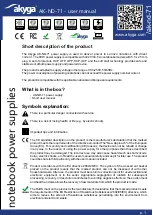
3 - Programming the DC Source
30
Pre-event and Post-event Triggering (Agilent 66312A, 66332A Only)
When a measurement is initiated, the dc source continuously samples either the instantaneous output
voltage or current. As shown in figure 3-6, you can move the block of data being read into the acquisition
buffer with reference to the acquisition trigger. This permits pre-event or post-event data sampling.
4096 DATA POINTS
4096 DATA POINTS
4096 DATA POINTS
OFFSET = -4096
OFFSET = -2048
OFFSET = 0
4096 DATA POINTS
ACQUISITION
TRIGGER
OFFSET = 0 to 2
9
TIME
Figure 3-6. Pre-event and Post-event Triggering
To offset the beginning of the acquisition buffer relative to the acquisition trigger, use:
SENSe:SWEep:OFFSet:POINts <offset>
The range for the offset is -4096 to 2,000,000,000 points. As shown in the figure, when the offset is
negative, the values at the beginning of the data record represent samples taken prior to the trigger. When
the value is 0, all of the values are taken after the trigger. Values greater than zero can be used to
program a delay time from the receipt of the trigger until the data points that are entered into the buffer are
valid. (Delay time = Offset X Sample period)
Pulse Measurement Example (Agilent 66312A, 66332A only)
The following program illustrates how to make a pulse measurement over the GPIB. The measurement
function is set to ACDC, which gives the best results for current waveforms that have ac content. The
measurement incorporates 100 readings taken at time intervals of 20 microseconds, for a total
measurement time of 2 milliseconds. The trigger point for the pulse measurement occurs at 0.1 amperes
on the positive slope of the current pulse. The measurement offset is programmed so that 20
measurement points prior to the trigger are also returned as part of the measurement sample.
Because measurement triggers are initiated by the current pulse, a FETCh command is used to return the
measurement data. FETCh commands are also used to return the MAXimum, MINimum, HIGH, and LOW
values of the measurement.
NOTE:
MEASure commands cannot be used to return data in this example because they always
acquire NEW measurement data each time they are used.
The program can be run on any controller operating under Agilent BASIC. To generate output pulses, an
electronic load is programmed to generate 3-ampere pulses with a duty cycle of 100 microseconds at
1000 Hz. The power supply address is 705, and the load address is 706. If required, change these
parameters in the appropriate statements.
















































